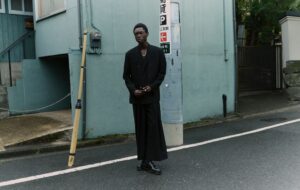|
|
||
|
As you’d expect in a moon-sized space station, the Star Wars Death Star is replete with amenities fit for an emperor. There’s a throne room and a detention block, droid maintenance facilities and a conference room, a trash compactor and, of course, a planet-destroying super laser. It is perhaps no surprise, therefore, that in its Lego incarnation it takes 3,803 separate building blocks to create the battle station in all its fully armed and operational glory. Speaking from his office in Manhattan, the architect David Rockwell reminisces about how he and his two young children slaved over the Lego Death Star for two weeks, as they painstakingly followed the instructions. In the days that followed its completion, however, as the Death Star lost pieces to the solar wind buffets and asteroid fields of day-to-day play, Rockwell noticed that something new and unscripted was taking place. “When half the pieces were lost, which happens unless you have museum cases, then my kids would pick up the stray pieces and start creating new things. I started to recognise that what kids try to do is to create their own rules, their own way to play.” It is this innate willingness to throw away the instructions and allow children to play in a self-directed manner that infuses the Rockwell Group’s Imagination Playground, which opened in lower Manhattan last year. A multi- level, peanut-shaped space, the Imagination Playground is the very definition of an urban playground, surrounded by mammoth glass towers, the East River and the thundering traffic of the FDR Drive. There are sand pits and water pools, and a serpentine fence that pays respects to the nearby historic seaport. But what truly marks it out from other playgrounds is the vast array of large blue foam blocks that are scattered around the site. These blocks – some 350 of them in 20 different designs – can be rolled, rotated, pivoted, sat on, worn, and easily combined to build walls or ladders, rivers or dams. As such they provide children not with a static plaything, like a traditional slide or seesaw, but with one that is intrinsically protean. Yet if one of the central tenets of child’s play is that building a structure comes before discovering its use, how does an architect, whose creed is diametrically opposed to this, go about creating something that is structured enough to work as a building block, yet multi-faceted enough not to be restrictive? “It was about finding the simplest common denominator,” says Rockwell. “I started by sketching out about 100 different interesting things you could create that would engage children’s instincts to play.” The designs included durable pinframes – screens filled with moveable pins which retain the impression of an object being pressed into them – as well as wheels filled with sand and simple carousels that could be created from various parts. Ultimately, however, Rockwell found that increased utility could only be found with decreased complexity. “We mocked them up and synthesised them down to what were the most flexible pieces and naturally started to think about block play.” Block play has long been known to help develop children’s cognitive and motor skills, but usually on an individual basis. Rockwell decided to scale up his blocks, so that some of the pieces needed two children to handle them with ease, making them social rather than solitary toys.
credit Frank Oudeman Nevertheless at the heart of the Imagination Playground lies an inherent contradiction: how does a rigorously designed and deliberate space prompt spontaneity? To answer this Rockwell delved deep into the history of the playground. Since the mid-19th century, no public space has excited moralists and psychologists as much as the playground. In the late Victorian era, when physical exercise was seen as having a moral dimension, playgrounds with isolated swings and slides were seen as essential places to build better citizens. By the early 1900s, as sand pits and climbing frames became acceptable playthings, playgrounds were seen as safe havens for children, in direct opposition to the vices and violence found in the streets. But it was amid the devastation that followed the Second World War that the greatest leap forward in playground design took place. In Copenhagen, adventure playgrounds blossomed. These were little more than bombed-out lots in which children could play with whatever tarps, tires and two-by-fours they could find. These playgrounds abandoned traditional equipment and admitted that an acceptance of risk was necessary if meaningful child’s play was to prosper. At the same time artists and architects were starting to look at playgrounds afresh. Aldo van Eyck’s site-specific work in Amsterdam integrated playgrounds into the urban fabric, while in New York the Museum of Modern Art and educational toy manufacturer Creative Playthings were instrumental in promoting the union of playgrounds and cutting-edge sculpture in a number of exhibitions. Chief among Rockwell’s influences, however, was the never-built Isamu Noguchi and Louis Kahn playground scheduled for New York’s Riverside Park. Begun in 1961, the playground was to be moulded out of an eight-acre stretch of steep ground. It was to be filled with truncated earth pyramids that were perfect for climbing up and sliding down and surrounded by Noguchi’s sculptural toys. There was no set way for entering the park, no path to follow. It was to be explored at leisure, to be played with how you will. It was, in the architectural historian Susan Solomon’s words, “a single unified composition of bold geometric shapes based on interrelated and interconnected parts”. (It was attacked at the time by the New York City Parks Commissioner as “an unjustifiable architectural monument”, which would appeal only to tourists and the “avant-garde”.) Indeed, when Noguchi and Kahn’s design is combined with the modular plywood Tyng Toys created by Kahn’s frequent collaborator Anne Tyng in the late 1940s, which children could turn into any number of play structures, a historical blueprint for the Imagination Playground reveals itself clearly. When Rockwell first announced that he was going to be developing a playground – in private-public partnership with the New York Department of Parks & Recreation and to the eventual cost of $7.5 million – he reached out to environmental psychologists such as Roger Hart at the City University of New York, and the British adventure playground operator Penny Wilson, as well as Solomon, whose brilliant study American Playgrounds: Revitalizing Community Space (2005) both describes the halcyon days of post-war playground design and also laments the obsessive focus on playground safety of the following decades. “They first contacted me in 2006,” Solomon says, “and we talked about the things that had been done in the late 1960s and 70s until they had a very firm grasp of what had gone on in playgrounds, and especially what had gone wrong. I directed them to sources, to books on theory and books on the importance of play. I guess I was more of a sounding board resource as to what was out there in the written world.” In the meantime, parents were also letting Rockwell know how their children should be playing. “We got a lot of feedback very quickly,” he says. “I guess the way we approached it was we were open to all. But just like we don’t tell kids how to play, we didn’t ask the parents to tell us how to develop this.” “They really wanted to make a change,” Solomon concurs. “They were very respectful of what was out there but they really wanted to shift the paradigm. What was really gratifying about them was that they listened, which you can’t always say is true about clients.” “Sometimes it’s helpful to do something you haven’t done before,” says Rockwell. “It allows you a kind of fresh approach. I think both the playgroups and experts we talked to were pleased to have our enthusiasm and our lack of limits. We didn’t have blinders on yet.” In order to see if his initial set of blocks could stimulate the kind of unstructured play he was looking for, Rockwell held test play-dates. “A lot of the test play-dates began with boys using the noodles [the long cylindrical foam blocks] to fight, which of course freaked all of the grown-ups out,” recalls Rockwell. “And almost all the play began with individual play as opposed to collaboration. But 15 or 20 minutes in, and after we had all resisted the urge to tell the kids what to do, what we found is they would start to collaborate. Kids would inevitably look to their left and say, ‘Well, this boy has created that, how do I link my thing to their thing?’ And so that became a fascinating thing to see, the urge to participate and build together.” In response to these tests, the playground’s seating areas were set far back from the play area itself, encouraging parents not to meddle in their children’s play. And although the Imagination Playground has a “play associate”, who is on call throughout the day to encourage and prompt, their main role, as Rockwell admits, is to stop any of the blocks “walking”. Indeed, during unguided play the blocks’ versatility surprised even Rockwell himself. “The strange thing was we found that, without instruction, kids were building things that we didn’t think were buildable. We didn’t really think you could create vehicles, it wasn’t part of our thing.” The success of the Imagination Playground has led to Rockwell creating portable versions of his blocks – the Imagination Playground in a Box – that allows local authorities to transform even the dullest of playgrounds. There are now over 200 in use throughout the US. Similarly a permanent Imagination Playground is scheduled to be opened in London by the end of the summer. What has surprised many is that the Rockwell Group should have chosen this path to go down, yet Rockwell himself sees the playground as being a natural extension of his work in restaurant and theatre design. “When we do a restaurant – we just did a Nobu in Beijing – the issues we’re dealing with are, of course, problem-solving and layout and creating a design that grows out of Nobu’s narrative and relates to the food and relates locally to the site and context. But we’re also trying to create a place that, once you go through that front door and you enter it, you also feel a little bit freer to engage and participate and play. That’s always been kind of an obsession with us.”
credit Darin Mickey |
Image Rockwell Group/Blandon Belushin
Words George Pendle |
|
|
||

















